Nevertheless, there are still some tailor shops keeping the old style by making ao dai in the classical way, which is a plain ao dai without waistline. Among them is Viet Hung tailor shop on Nguyen Sinh Cung street (Hue city) of Mr. Pho, an over 80-year-old tailor.
With over 30 years’ experience of making classic ao dai, Mr. Pho said that the steps of making old ao dai are more difficult than the ones in modern ways, as most of them are handmade, requiring elaboration, carefulness and high skills such as cutting, assembling, quilting, binding… Also according to Mr.Pho, the most difficult stage is supposed to be assembling the body of ao dai, then sewing and making buttons... Therefore, sometimes, the labor cost for making a classic ao dai may double the cost of a modern ao dai.
However, the number of customers want to wear classic ao dai is not less due to that reason. On the contrary, there are more and more young customers choosing this elegant and charming outfit.
Thua Thien Hue Weekly would like to introduce some steps of tailoring classic ao dai through a series of photos taken by Khanh Dang!

Careful in every stitch
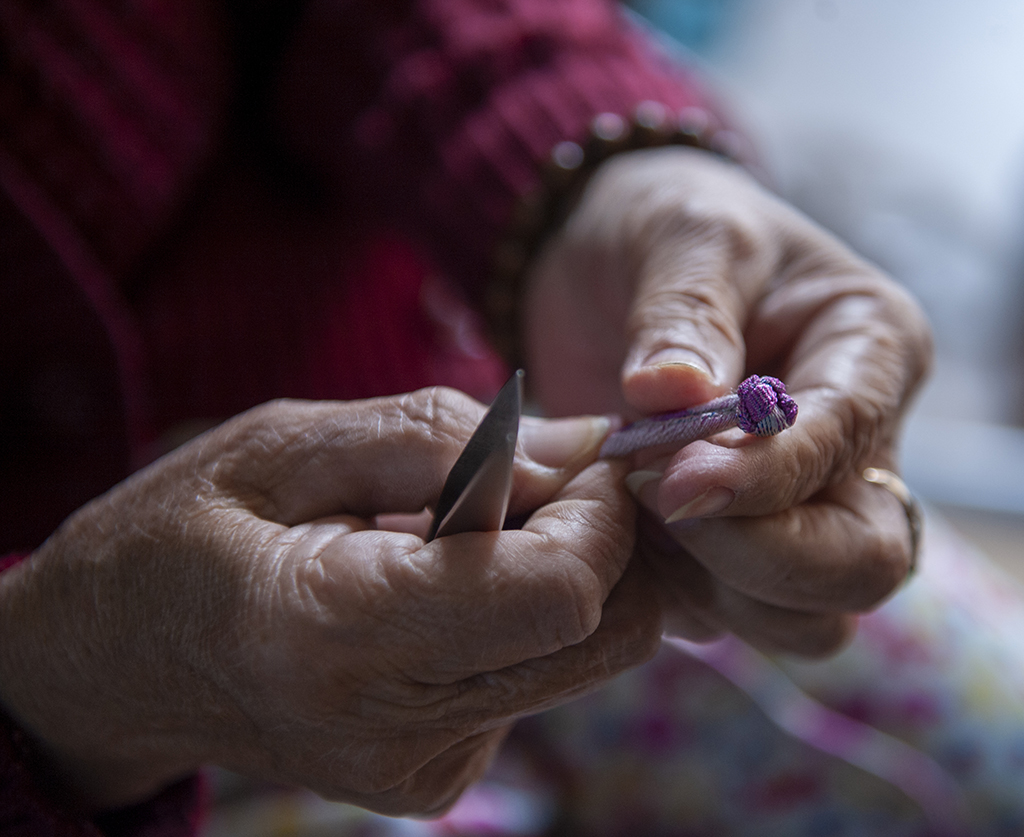
Hand-make button
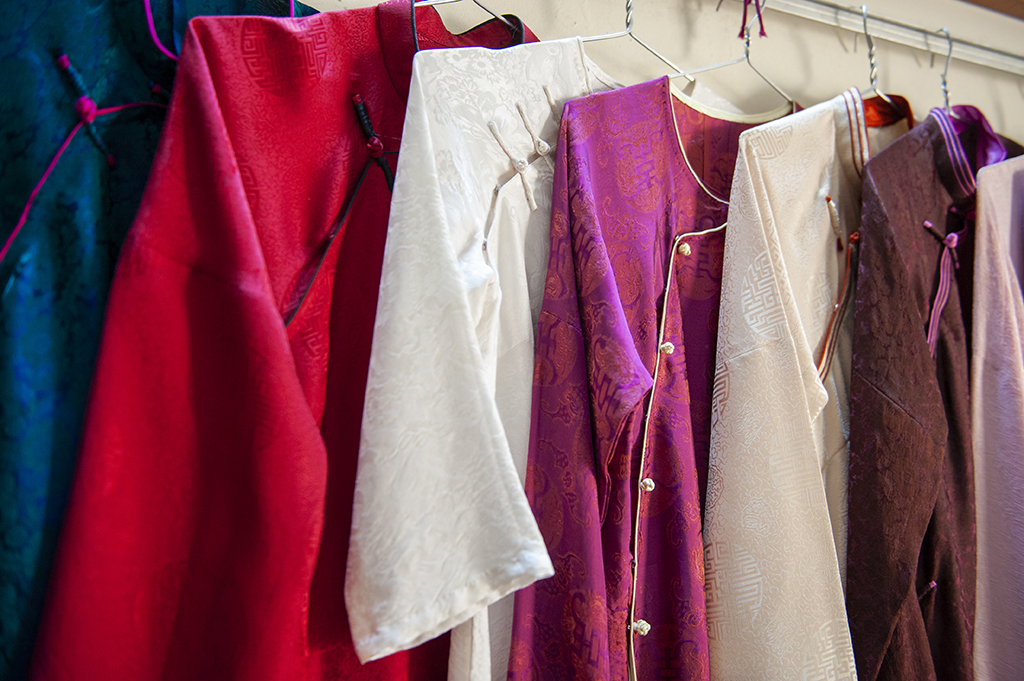
Finished old ao dai
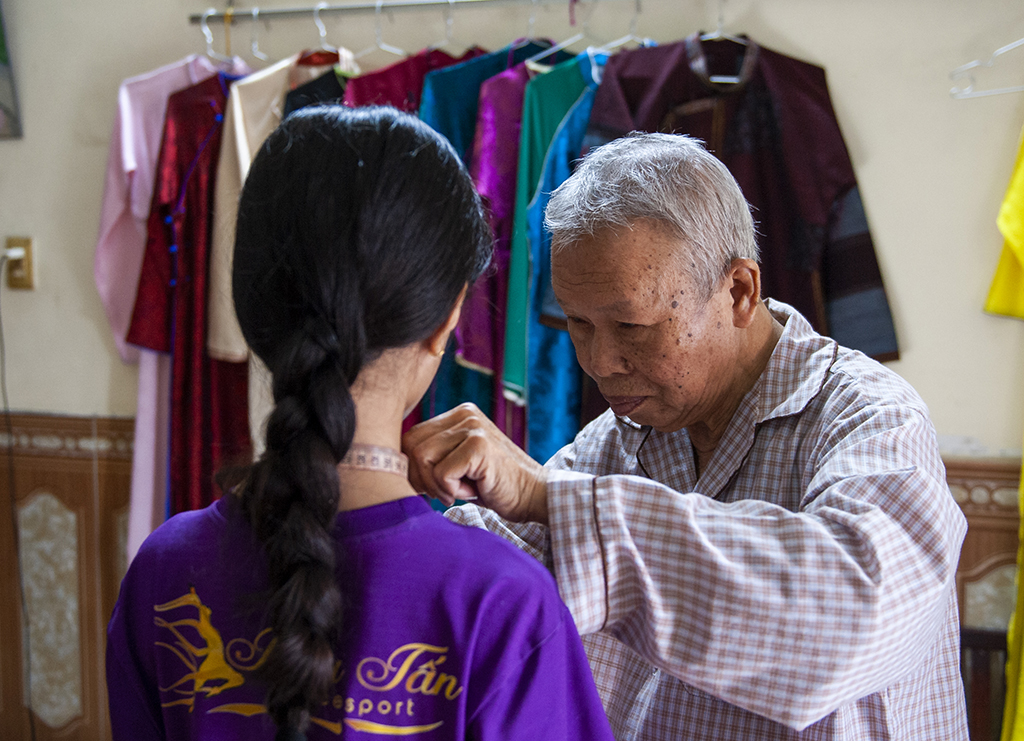
Measuring in detail
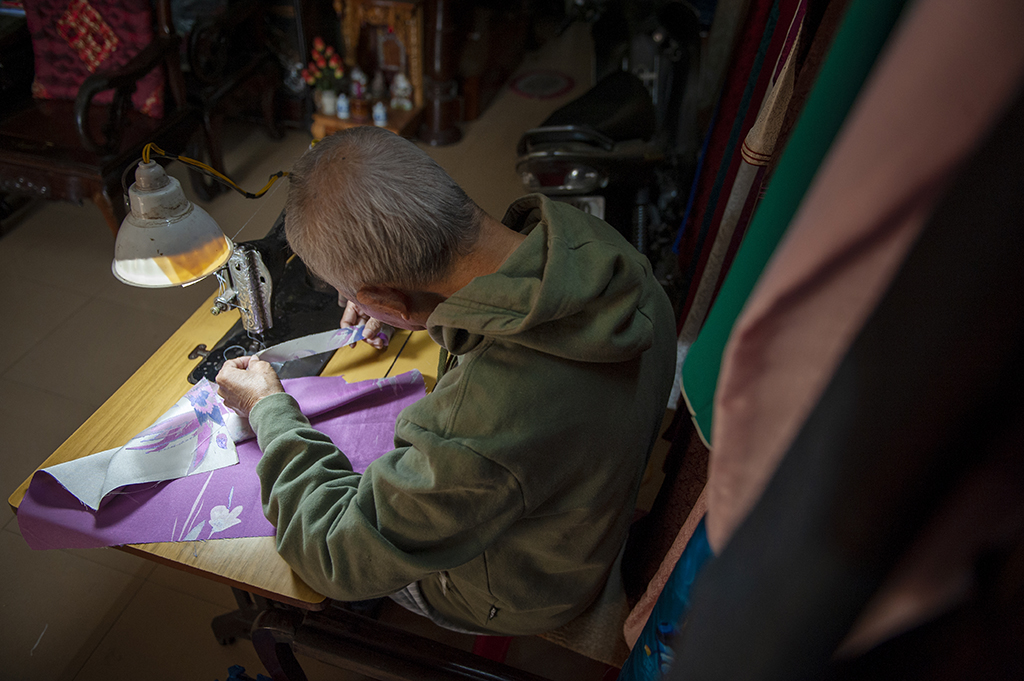
Assembling the body of ao dai is the most important stage
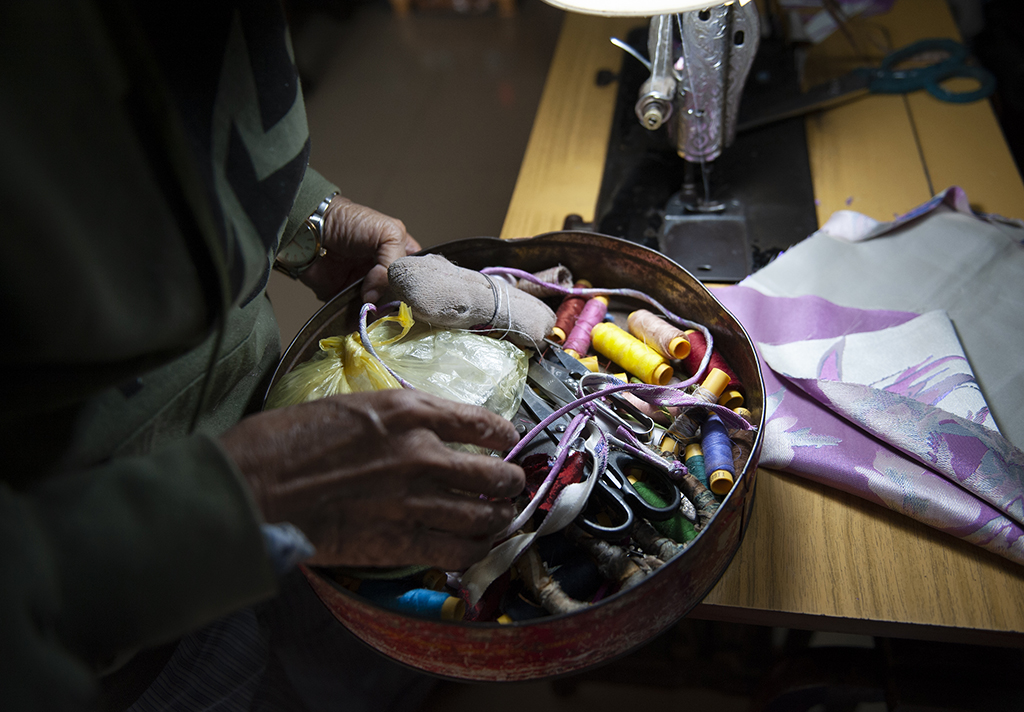
Choosing the right colorful threads

Binding lap of ao dai by hand

An old ao dai has a link seam on the sleeve and in the middle of its body
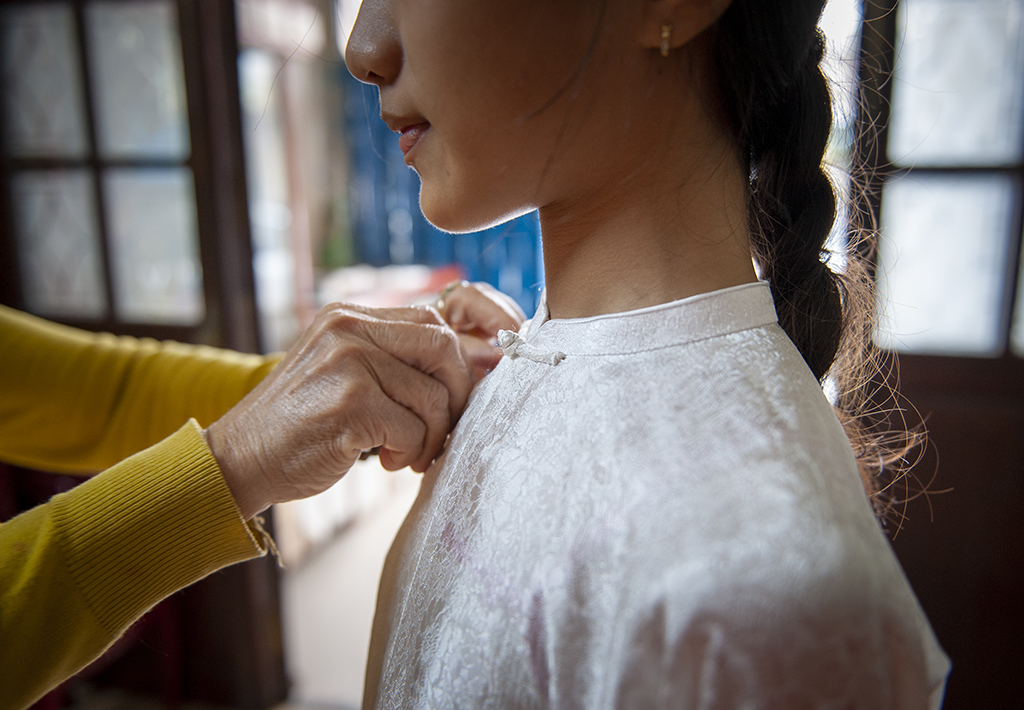
More and more girls choosing classic ao dai
